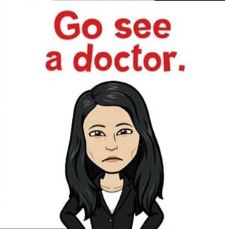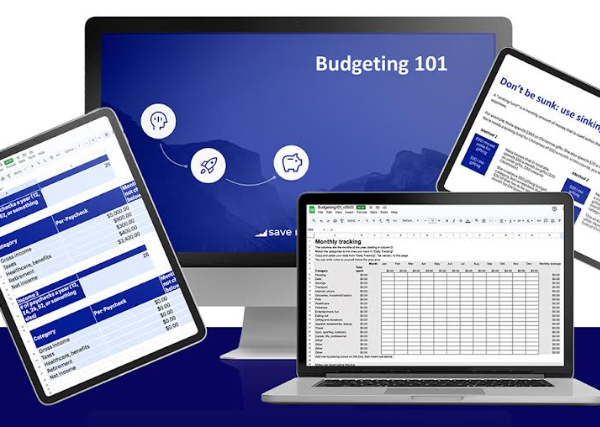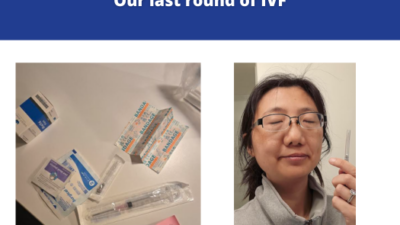Healthcare. Over the years I’ve come to regard the American healthcare system as a four letter word. It is frustrating. Bloated with too many third parties and intervening parties. Costly. Hard to understand.
And yet so very vital, because health is wealth.

As I went through IVF, pregnancy, and labor and delivery, I’ve learned a few small tricks that helped manage the complexity of paying for healthcare along the way if you are covered by insurance. From knowing what is covered, to tracking your claims and reading your bills, this blog post aims to help you have correct healthcare claims and minimize bills that you are not responsible for paying. I have also teamed up with @financiallyfedup as well as one other anonymous contributor, who are both in the insurance industry. They have helped verify the accuracy and provided additional tips as well within this blog post.
By no means is this medical advice, nor is any of this meant to encourage insurance fraud. What we want you to be aware of is that you may be surprised by how often medical billing has errors, and following the practices below can help reduce stress and lead you to feel more empowered during what is already a stressful time.
The following assumes that you are now in a healthcare situation where you need to get treatment, but it is not necessarily required right away.
1) Never get treatment without understanding what is covered by your health insurance. Therefore, the first instinct here is – don’t get treatment just yet! If you feel pressured to make an appointment, make one that gives you at least a week to call insurance and know your situation.
2) Ask your doctor or nurse (or sometimes other people in their office have a script ready) to describe to you the procedures and lab tests involved with your treatment. Ask them whether it is in-patient or out-patient. For every procedure, also ask for the ICD10 codes, or at the very least CPT codes. Each procedure that you undergo comes with such a code, and it is how the industry bills and sorts everything to match together. You don’t ask your doctor for costs at this point, because they are not going to know and not going to give you a good answer, unless you’re a 100% cash paying patient.
3) Once you know what is involved in your treatment, call your insurance company. You need to confirm the following:
- That your doctor, and/or the hospital you are going to, is covered. It’s important to note that while your doctor might be covered, they could be performing the treatment or procedure at a facility that is not. Be aware of this ahead of time and work with your doctor to find a facility that is covered by your insurance. If you’re in truly an emergency situation. Just get yourself treated and don’t die; go to a hospital that you know takes your insurance. Most states mandate that insurers pay for non-par doctors seen in the ER of a par hospital. In New Jersey this is called the prudent-lay-person mandate. If you end up getting a huge emergency room bill, call your insurer and ask, “shouldn’t I be held harmless if I went to a par hospital?” They should adjust the bill either way. The key here is –make sure your hospital is covered (par hospital), or if you’re visiting a doctor’s practice, make sure the doctor (par doctor) is covered and performing your procedure in a covered facility.
- Confirm whether the procedures are covered. This is where knowing the ICD10 or CPT code is best, because you have the power of accuracy. Read each code to the insurer, and they should be able to tell you whether it’s covered, how much / whether you have co-insurance (the percentage you pay after you have hit your deductible), and whether there is a policy max (for example, some procedures are so expensive that you can only do them X times in a year)
- Ask if any procedures require prior authorizations. This is important because prior authorizations require the input of your doctor to write a letter necessitating the procedure, and can take time to process (for the doctor to send the letter, for the insurance to approve it), and logistically, it’s best not to start treatment until you have been approved. Prior authorization requirements change every now and then. If your treatment is scheduled weeks or months from now, doublecheck with your provider, ahead of treatment, to ensure their staff is checking with your insurer for any updated requirements. Sometimes, the date of your service might be after a prior authorization has expired. This happened a lot during the pandemic. To get it covered, you may need a correction form or a new prior authorization request. Double check with your insurer which form is required, and make sure that both your provider and insurer has received the updated forms.
4) Now, you can proceed and visit the doctor. While you are there, pay attention to who is treating you and what tests are being run. Sometimes, doctors may order extra tests (that they want) to diagnose you, and some of them might not be covered by insurance. You would NOT want to suddenly be charged for a fancy new machine. So typically, before I’m sent to the lab, I always ask if all the tests that the doctor ordered are routine. If anything is NOT routine, then you run the risk of it not being covered. Sometimes these are optional tests, or sometimes they are an upsell.
5) If the doctor does not use an in-house lab and sends your specimen out, you also may want to ask which lab they use. There are two labs that run the majority of all diagnostic tests in the country – Quest and LabCorp. In general, most insurance companies cover one, but not the other. Sometimes they cover both. It doesn’t hurt for you to know which one they cover, and then make sure that the doctor is sending out to the one that your insurance company will pay for.
6) Take notes! I try to write an email to myself after every medical visit to remind me what happened at the appointment and if I had any labs drawn. If you’re in a hospital setting and you’re being seen by multiple doctors in a non emergency situation, a good tip is asking every doctor who pops into your room for their name, and their role in your care. This is key, as many will bill you for a consult for just looking at your chart and asking how you are doing. It is a bad practice of some doctors who are not staffed by the hospital. So be on the lookout.
7) Now you wait. Start logging online to your insurance portal as claims are being processed. There is usually a delay between when a claim is processed and when you receive the EOB or the bill from the hospital, but it never hurts to be ahead of the game. Be aware.
8) You will know if something is wrong – your bill looks much higher than you expected, or a claim is being denied for something you believe should have been covered. Now comes the next round of phone calls. Again, prioritize the insurance company – they’re usually the ones who can explain in more detail than the original EOB, why a claim was denied. Before paying any bill from your provider’s office, ensure that the amount matches what you expected after reviewing the EOBs. If you receive a bill multiple times, work with your Insurer to verify if it has been settled and inform your provider’s billing office, they may need to close the bill to stop the automated invoices from being sent out. Providers may also send you a document that looks just like a bill but is actually a request for consent to bill your insurance, review your documents closely and provide consent when requested.
9) If you can, try to get a call with the insurance company as well as the billing department of your healthcare provider. If you cannot get on a 3-way call, then you’d have to call each of them separately to understand the situation. Always try to note the name of the person you spoke to, obtain a reference code, and date when you spoke and what was communicated. Again, I do this typically via emails to myself.
10) If all else fails, and you’re still being faced with an incorrect bill – you may need to visit the billing office in person. Bring documentation and remain calm. Your goal – in the case of a covered procedure – is to ensure that your claim is being filed. It does not hurt to be nice and calm in person. The power you wield is data and documentation, which is why note taking is so important.
Want some extra credit?
- Sometimes, if you signed up for an experimental drug or test, they have their own customer service as well. Find the website for the drug or test and call up the customer service line to see if you can get a discount.
- You may already know this, but often times generic drugs are covered when brand names are not! When checking up on pharmacy benefits, if a branded drug is not covered, ask if its generic is.
- Just because a healthcare provider gives you a zero-interest payment plan, does not stop them from sending your bill to collections after a certain amount of time. So even if you do work out a payment plan, be sure to ask when bills are sent to collections (it’s often after 6 months).
- Check with HR, if your company offers an EAP (Employee Assistance Program) many times they can help in verifying coverage as well as acting as a liaison between parties if there is a claim in question.
Practice the above! It will take time and patience to get the hang of this, but I promise you once you do, you will feel much more confident that your healthcare costs are accurate in the long run.










